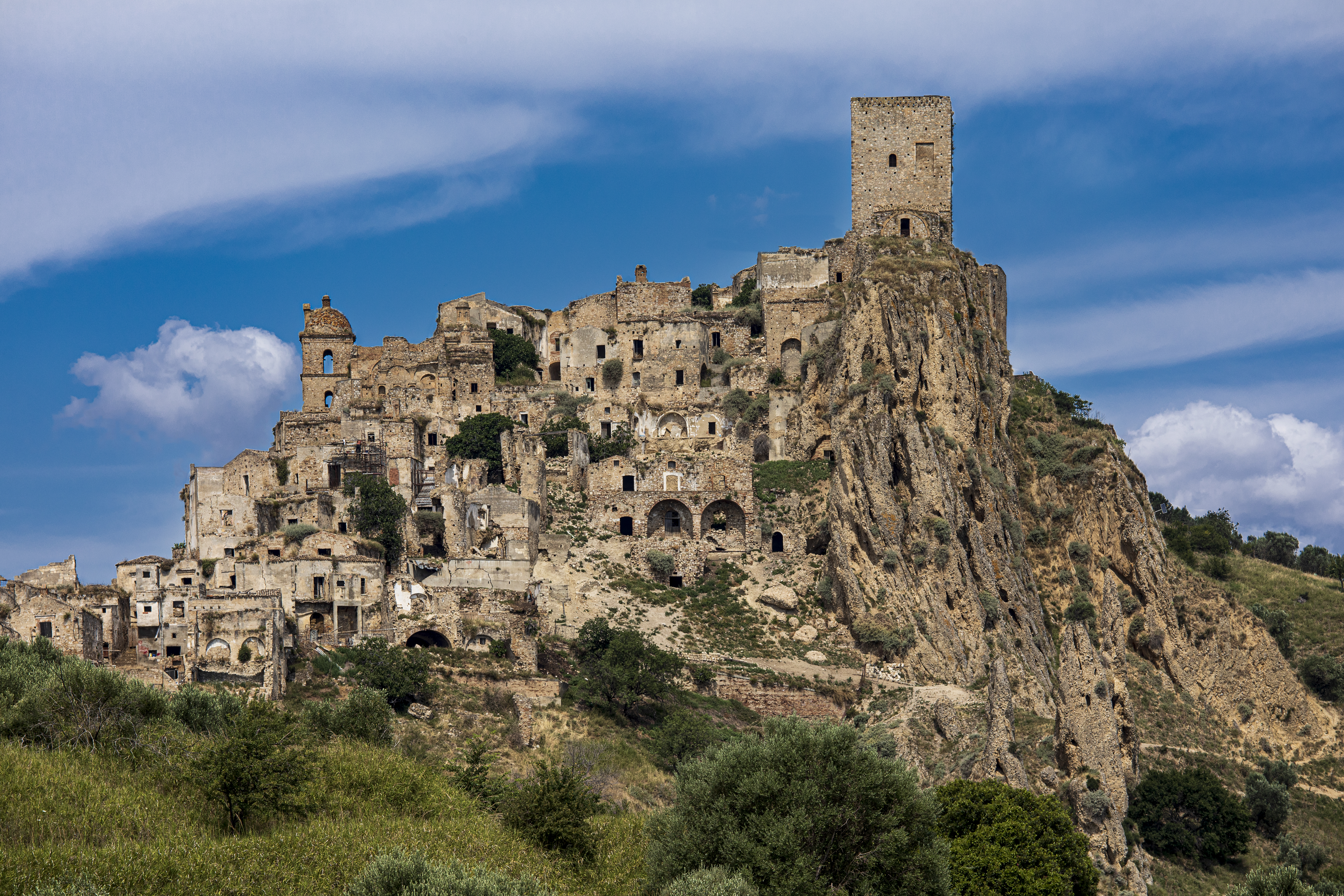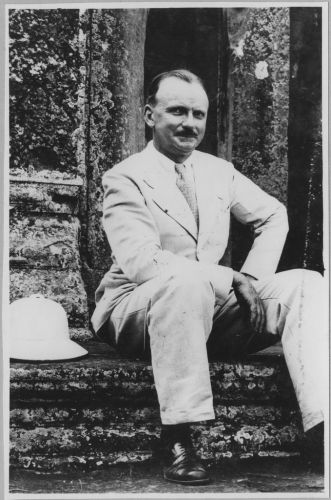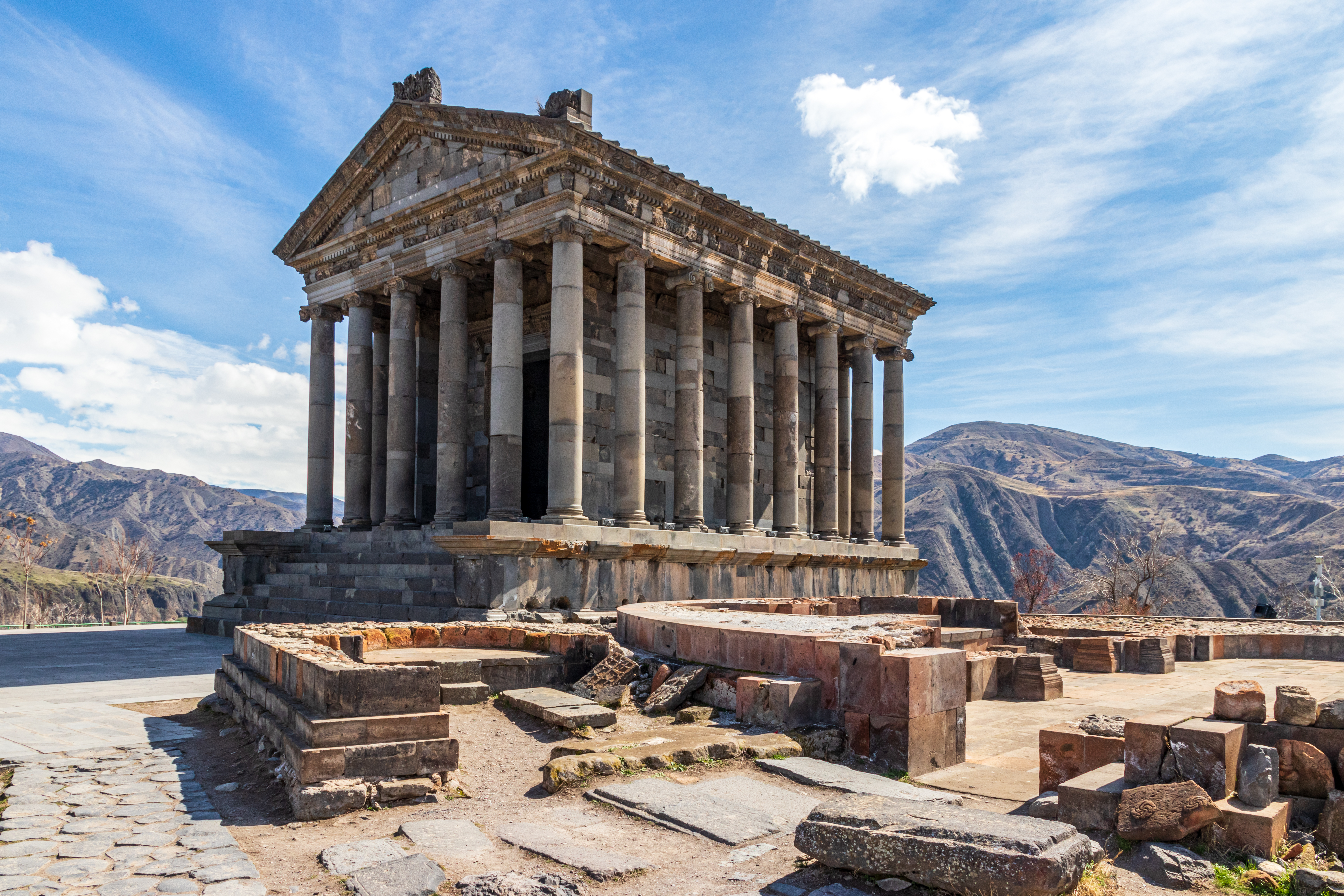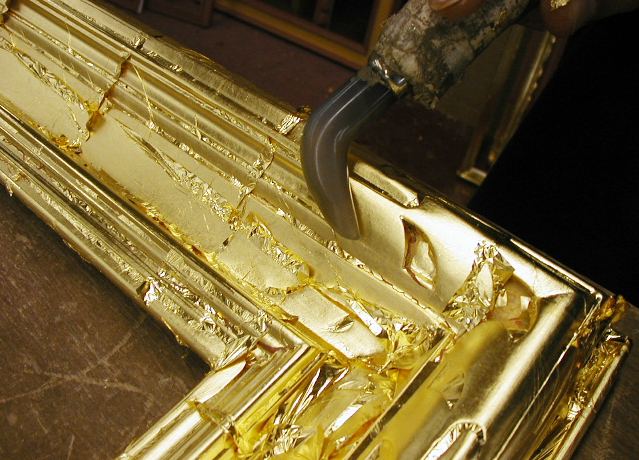|
Preah Khan
Preah Khan (; "Royal Sword") is a temple at Angkor, Cambodia, built in the 12th century for King Jayavarman VII to honor his father.Higham, C., 2014, Early Mainland Southeast Asia, Bangkok: River Books Co., Ltd., It is located northeast of Angkor Thom and just west of the Jayatataka baray, with which it was associated. It was the centre of a substantial organisation, with almost 100,000 officials and servants. The temple is flat in design, with a basic plan of successive rectangular galleries around a Buddhist sanctuary complicated by Hindu satellite temples and numerous later additions. Like the nearby Ta Prohm, Preah Khan has been left largely unrestored, with numerous trees and other vegetation growing among the ruins. History Preah Khan was built on the site of Jayavarman VII's victory over the invading Chams in 1191 . Unusually the modern name, meaning "holy sword", is derived from the meaning of the original—''Nagara Jayasri'' (holy city of victory). The site may p ... [...More Info...] [...Related Items...] OR: [Wikipedia] [Google] [Baidu] |
Cambodia
Cambodia, officially the Kingdom of Cambodia, is a country in Southeast Asia on the Mainland Southeast Asia, Indochinese Peninsula. It is bordered by Thailand to the northwest, Laos to the north, and Vietnam to the east, and has a coastline along the Gulf of Thailand in the southwest. It spans an area of , dominated by a low-lying plain and the confluence of the Mekong river and Tonlé Sap, Southeast Asia's largest lake. It is dominated by a tropical climate and is rich in biodiversity. Cambodia has a population of about 17 million people, the majority of which are ethnically Khmer people, Khmer. Its capital and most populous city is Phnom Penh, followed by Siem Reap and Battambang. In 802 AD, Jayavarman II declared himself king, uniting the warring Khmer princes of Chenla Kingdom, Chenla under the name "Kambuja".Chandler, David P. (1992) ''History of Cambodia''. Boulder, CO: Westview Press, . This marked the beginning of the Khmer Empire. The Indianised kingdom facilitated ... [...More Info...] [...Related Items...] OR: [Wikipedia] [Google] [Baidu] |
Avalokiteśvara
In Buddhism, Avalokiteśvara (meaning "the lord who looks down", International Phonetic Alphabet, IPA: ), also known as Lokeśvara ("Lord of the World") and Chenrezig (in Tibetan), is a Bodhisattva#Bhūmis (stages), tenth-level bodhisattva associated with great compassion (''Karuṇā, mahakaruṇā''). He is often associated with infinite light Amitabha Buddha. Avalokiteśvara has numerous Great 108 manifestations and is depicted in various forms and styles. In some texts, he is even considered to be the source and divine creator of all Hindu deities (such as Vishnu, Shiva, Brahma, Saraswati, Bhumi (goddess), Bhudevi, Varuna,..etc). While Avalokiteśvara was depicted as male in India, in East Asian Buddhism, Avalokiteśvara is most often depicted as a female figure known as Guanyin (in Chinese). In Japan, Korea, and Vietnam, he is known as Kannon, Gwaneum, and Quan Âm, respectively. Guanyin is also an important figure in other East Asian religions, particularly Chinese folk rel ... [...More Info...] [...Related Items...] OR: [Wikipedia] [Google] [Baidu] |
Garuda (Preah Khan, Angkor) (6836881050)
Garuda (; ; Vedic Sanskrit: , ) is a Hindu deity who is primarily depicted as the mount (''vahana'') of the Hindu god Vishnu. This divine creature is mentioned in the Hindu, Buddhist, and Jain faiths. Garuda is also the half-brother of the Devas, Gandharvas, Daityas, Danavas, Nāgas, Vanara and Yakshas. He is the son of the sage Kashyapa and Vinata. He is the younger brother of Aruna, the charioteer of the Sun. Garuda is mentioned in several other texts such as the Puranas and the Vedas. Garuda is described as the king of the birds and a kite-like figure. He is shown either in a zoomorphic form (a giant bird with partially open wings) or an anthropomorphic form (a man with wings and some ornithic features). Garuda is generally portrayed as a protector with the power to swiftly travel anywhere, ever vigilant and an enemy of every serpent. He is also known as Tarkshya and Vainateya. Garuda is a part of state insignia of India, Indonesia and Thailand. Both Indonesia and Thailand ... [...More Info...] [...Related Items...] OR: [Wikipedia] [Google] [Baidu] |
Khmer Architecture
Khmer architecture (), also known as Angkorian architecture (), is the architecture produced by the Khmer during the Angkor period of the Khmer Empire from approximately the later half of the 8th century CE to the first half of the 15th century CE. The Indian rock-cut architecture, architecture of the Indian rock-cut temples, particularly in sculpture, had an influence on Southeast Asia and was widely adopted into the Indianization of Southeast Asia, Indianised architecture of Cambodian (Khmer), Names of Vietnam, Annamese and Javanese temples (of the Greater India). Evolved from Indian influences, Khmer architecture became clearly distinct from that of the Indian sub-continent as it developed its own special characteristics, some of which were created independently and others of which were incorporated from neighboring cultural traditions, resulting in a new artistic style in Asian architecture unique to the Angkorian tradition. The development of Khmer architecture as a distinct ... [...More Info...] [...Related Items...] OR: [Wikipedia] [Google] [Baidu] |
Gopura
A ''gopuram'' or ''gopura'' (Tamil language, Tamil: கோபுரம், Telugu language, Telugu: గోపురం, Kannada: ಗೋಪುರ, Malayalam language, Malayalam: ഗോപുരം) is a monumental entrance tower, usually ornate, at the Entrance Hall, entrance of a Hindu temple, in the Dravidian architecture, South Indian architecture of the southern Indian states of Tamil Nadu, Andhra Pradesh, Kerala, Karnataka, and Telangana, and Sri Lanka. In other areas of India they are much more modest, while in Southern Indian temples they are very often by far the highest part of the temple. Ancient and early medieval temples feature smaller ''gopuram'', while in later temples they are a prominent feature of Hindu temple architecture, Hindu Tamil architecture, Dravidian style; in many cases the temple compound was expanded and new larger gopuram built along the new boundary. They are topped by the ''kalasam'', a bulbous stone finial. They function as gateways through the ... [...More Info...] [...Related Items...] OR: [Wikipedia] [Google] [Baidu] |
World Monuments Fund
World Monuments Fund (WMF) is a private, international, non-profit organization dedicated to the preservation of historic architecture and cultural heritage sites around the world through fieldwork, advocacy, grantmaking, education, and training. Founded in 1965, WMF is headquartered in New York, and has offices and affiliates around the world, including Cambodia, France, Peru, Portugal, Spain, and the United Kingdom. In addition to hands-on management, the affiliates identify, develop, and manage projects, negotiate local partnerships, and attract local support to complement funds provided by donors. History International Fund for Monuments (1965–1984) The International Fund for Monuments (IFM) was an organization created by Colonel James A. Gray (1909–1994) after his retirement from the U.S. Army in 1960. Gray had conceived of a visionary project to arrest the settlement of the Leaning Tower of Pisa by freezing the soil underneath, and he formed the organization in 196 ... [...More Info...] [...Related Items...] OR: [Wikipedia] [Google] [Baidu] |
Maurice Glaize
Maurice Glaize (26 December 1886 – 17 July 1964) was a French architect and archeologist, Conservator of Angkor from 1937 to 1945. Early years: education, wedding, war and professional experiences Born to a family of artists in Paris (his father was an architect and his grandfather was Auguste-Barthélemy Glaize), he attended at École nationale supérieure des Beaux-Arts, learning under the architect Henri Deglane (architect), Henri Deglane. In 1913 he put in for the École française d'Extrême-Orient (EFEO), but ranked second behind Georges Demasur. On 3 January 1914 he married Louise Carlier, who gave him four sons and was a devoted mate. He served during World War I in a Observation balloon, balloon unit, and then finally on 11 June 1919 he achieved the qualification of :fr:Architecte diplômé par le gouvernement, architect dplg. He lived in Paris several years, working mostly as freelance architect, but never losing his interest in Indochina. Thanks to his cousin, Fran ... [...More Info...] [...Related Items...] OR: [Wikipedia] [Google] [Baidu] |
Anastylosis
Anastylosis (from the Ancient Greek: ; , = "again", and = "to erect stela or building) is an architectural conservation term for a reconstruction technique whereby a ruined building or monument is re-erected using the original architectural elements to the greatest degree possible, combined with modern materials if necessary. With the Venice Charter, it was established that the latter should be unobtrusive while clearly recognizable as replacement materials. It is also sometimes used to refer to a similar technique for restoring broken pottery and other small objects. Methodology The intent of anastylosis is to rebuild ruined historical architectural monuments from as much of the original material that is left after hundreds or even thousands of years of abuse. This is done by placing components back into their original positions. Where standing buildings are at risk of collapse, the method may entail the preparation of drawings and measurements, piece-by-piece disassembl ... [...More Info...] [...Related Items...] OR: [Wikipedia] [Google] [Baidu] |
Gilded
Gilding is a decorative technique for applying a very thin coating of gold over solid surfaces such as metal (most common), wood, porcelain, or stone. A gilded object is also described as "gilt". Where metal is gilded, the metal below was traditionally silver in the West, to make silver-gilt (or ''vermeil'') objects, but gilt-bronze is commonly used in China, and also called ormolu if it is Western. Methods of gilding include hand application and gluing, typically of gold leaf, chemical gilding, and electroplating, the last also called gold plating. Parcel-gilt (partial gilt) objects are only gilded over part of their surfaces. This may mean that all of the inside, and none of the outside, of a chalice or similar vessel is gilded, or that patterns or images are made up by using a combination of gilt and ungilted areas. Gilding gives an object a gold appearance at a fraction of the cost of creating a solid gold object. In addition, a solid gold piece would often be too soft or to ... [...More Info...] [...Related Items...] OR: [Wikipedia] [Google] [Baidu] |








